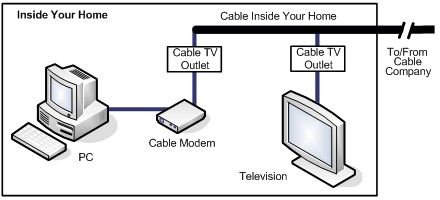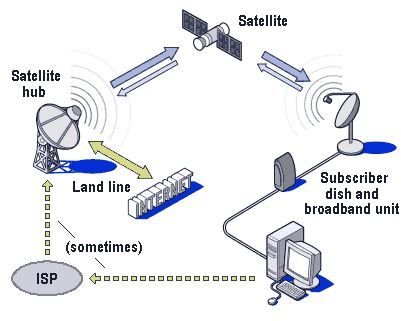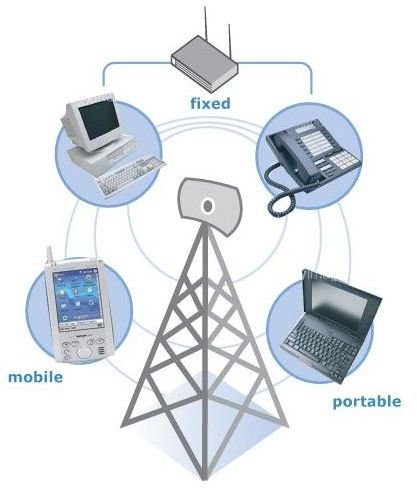What is a Broadband Connection? How Does Broadband Work? Mobile and ADSL Options
Simply put, broadband is any high-speed Internet connection that offers integrated access to voice, high-speed data, video-on-demand, and interactive delivery services. In most cases, broadband connections use DSLs (Digital Subscriber Lines) technologies to transmit data over telephone lines, though Cable broadband is also common, as is mobile broadband, which uses phone networks. Remote areas may be served with wireless broadband services through satellite networks or cellular phone networks, where other options are not economically viable or technically feasible.
Basic Broadband data transmission speeds are generally in excess of 768 kilobits per second (Kbps), downstream (from the Internet to the user’s computer) or upstream (from the user’s computer to the Internet). Regardless, there are still broadband options that start at 256Kbps. Broadband was developed out of a need to provide speedier Internet connections, and to enable more efficient data transmission across the Internet and corporate networks (i.e. VPNs and Extranets). The need for broadband services grew out of a demand, from consumers, for speedier alternates to the limited 56 kbps bandwidth of dialup connections. This demand grew exponentially as Internet content became more widely available and more feature rich.
How is broadband different from Dial-up?
A broadband connection is actually not that different from a dial-up connection. They both use similar equipment and POTS (plain old telephone service) to connect to the Internet service. However, ADSL and other broadband services use specialized modems. Another difference is that broadband is always on, 24 hours a day.
Normally you pay a flat monthly fee, no matter how often or how long you use the Internet. However, some providers may impose a monthly usage cap, especially when the service is delivered over more expensive infrastructure, such as cellular. But the major difference between dial-up and broadband is the speed; broadband connections are much faster.
Broadband data connections allow users to really enjoy a wide range of media that can be streamed directly to their computers. With broadband, users are able to:
- Download music and software
- Play games online
- Watch video clips and movies, and listen to music in real time, including live broadcasts
- Have live Internet meetings and video chats
Broadband works by receiving data signals over a media (wireless or cable) and then passing the data through a modem. The data you initially receive goes through the modem and is decoded and then recoded into a form the computer can use. Using this information, your computer lets you view your favorite online content. Broadband works on an always-on basis, once the equipment is switched on. Dialup is not like this but requires that you wait several moments to connect to the Internet. Once you are connected, you incur a per minute charge for as long as you remain online.
How much speed do you need?
Broadband Internet is generally available to most consumers who want high-speed connections, and in most cases they can get service with speeds in excess of 3Mb, for less than $40 per month. While a 1Mb connection will be adequate for the majority of users, some might require more, to download movies and large files, and still others may not need as much if they only do moderate surfing.
Entry-Level - 256K to 512K should be adequate, if you only use the Internet to read web pages and send email.
Moderate Use - For the majority of Internet users, a 1 –2 Mb connection will offer a good balance between price and performance. This speed is good for someone who will view a YouTube video or two and as well as download files and spend a few hours per week browsing the Internet.
Heavy or Shared Usage - A 4Mb or faster connection is worth considering if you intend to download lots of content, or if you intend to share the Internet connection between several computers at home or in the office. Connection speeds above 4Mb allow you to enjoy high quality video and music on demand or Digital Broadband Internet TV.
Unfortunately, consumers don’t always get what they pay for. Sometimes this happens because the bandwidth is shared among several users, and in other cases there may be technical issues. Do a broadband speed test to ensure that you are getting what you pay for. You can start by trying www.speedtest.net or www.speakeasy.net.
How does Mobile Broadband work?
In the future, more persons and service providers may resort to using a mobile wireless option, because it doesn’t tie the user to a
particular location, as well as frees the environs from unsightly, and often costly to install data lines. Mobile broadband requires no physical data line of any kind, but rather uses 3G or 4G mobile phone network technology to transmit data through cellular towers to handsets and mobile devices.
Some persons regard Wi-Fi as broadband, but unless it is a hotspot that is provided by a service provider, it can’t be truly regarded as broadband. In its purest form, Wi-Fi really is a network technology that is employed by organizations and individuals for their own use and is not generally accessible to the public at large, which is a characteristic. However, there are exceptions in cases when providers use Wi-Fi hotspots to provide mobile broadband service.
How does ADSL Broadband work?
ADSL (Asymmetrical Digital Subscriber Line) broadband comes through your local telephone exchange, through a Fixed Line Access Network made of copper wires. These are the telephone lines that are used for regular telephone service.
A small device called a micro-filter is used to separate the channels that are used for data and telephone line conservations, which allows for simultaneous data and phone conversations to occur on the same media. The final piece of the connection runs to an ADSL modem, through which computers are connected by data cables for Internet access.
The micro-filters must be connected to all the telephone sockets to which an ADSL modem is attached and used. This prevents the ADSL signal from interfering with your voice calls. Typically your ISP will provide you one or two micro filters, an ADSL modem, and the data cables necessary to get your broadband working.
The advantage of DSL service is that is allows you to use the same telephone line to make calls, as well as to access the internet without either getting in the way of the other (providing that micro filters are properly installed).
On the next page, we will continue to look at how SDSL, Cable and Satellite broadbands work.
How does SDSL Broadband work?
SDSL (Symmetric Digital Subscriber Line) services are not as common as ADSLs, but a few service providers do offer them. SDSLs are very similar to ADSL connections, but the difference is that ADSL can download data from the Internet faster than it can upload data, while SDSL will do equal fast uploads as it does downloads.
This broadband option is not popular among home users because requires an extra telephone line to facilitate faster uploads. Since most users access content that requires more download bandwidth, an ADSL usually suits their purpose well. SDSL is really a specialist option that some businesses use to service applications that send large amounts of data.
How does Cable Broadband work?
Unlike the copper wires that ADSL use, cable broadband is partially transmitted over fiber-optic cabling. Subscribers to cable broadband

usually have access to much faster connection speeds because the fiber optic material allows for far less signal degradation, and as a result, higher data transfer rates.
The other advantage of cable broadband is that it also allows for the simultaneous transmission of audio and visual signals on the same cable, which means you can get your landline telephone, digital TV and Internet services through one connection from the service provider.
How does satellite broadband work?
In more remote areas, where ADSL and Cable are not available, consumers may opt for a wireless solution such as Satellite broadband. This option is regarded as the Internet connection of last resort for persons in remote areas. However, the cost of wireless broadband can be quite high. Satellite broadband is particular expensive. It will cost approximately $300 to buy equipment (a one-time cost), and a monthly subscription starting at around $60 for 1Mbps. You can get service up to 5Mbps, but this can cost well over $300 per month.
Satellite broadband is expensive because it requires a more expensive equipment to send and and receive data between the satellites and

the satellite dish. Satellite broadband service comes in one-way and a two-way options, with each offering varying data transmission speeds.
A one-way connection, allows you to only receive data via the satellite; you can only send data (i.e. an email) by using a dial-up modem through a telephone line. In short, you will need two connections for this work, one by satellite and the other will be a dial-up connection.
Two-way services send and received through the satellite dish and require no separate phone line. As we said before, these are more expensive.
Satellite Internet connections work by sending and receiving data to satellites (that are orbiting the planet) through a satellite dish that is installed on the outside of your building. The dish is connected to a modem, which translates the signals into a language that your computer can use to communicate.
Summary
All broadband technologies provide a faster connection to the Internet than is possible using old-fashioned dial-up connections. How much speed a user needs, or the type of Internet connection that is best suited to his or her application, depends on what broadband options are available, the cost for the service and the amount of data that will be downloaded on a monthly basis, as well as the type of content that will be accessed. In any case, broadband connection options are becoming more widely available across the globe and will continue to do so, especially as the quality of Internet content becomes richer.
